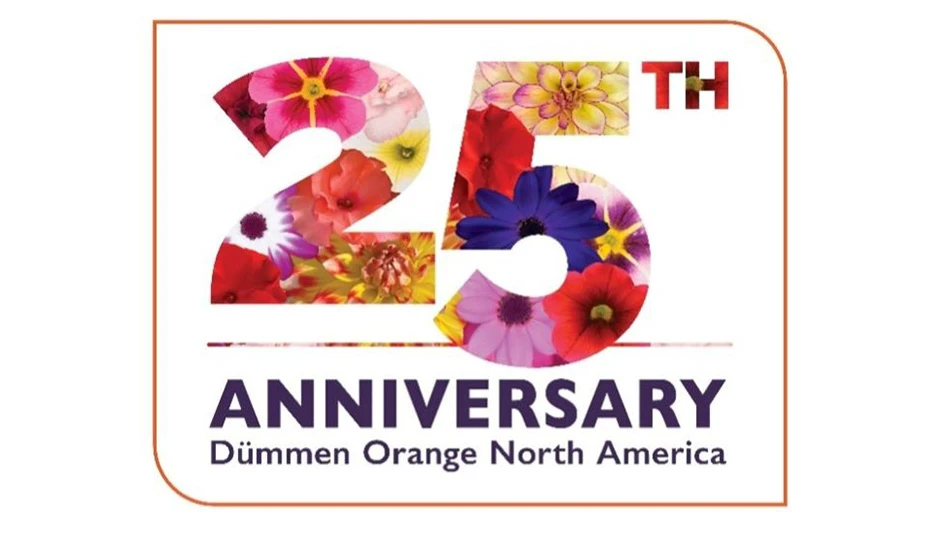 Customers come from miles around to the State Farmers Market in Raleigh, N.C., to purchase the unique details of Erin Weston's signature magnolia wreaths and garlands.
Customers come from miles around to the State Farmers Market in Raleigh, N.C., to purchase the unique details of Erin Weston's signature magnolia wreaths and garlands.
Weston is a grower of cut greens at Weston Farms in Garner, N.C. She and her father, Noel, have operated the farm since 2002, where Weston makes her wreaths and garlands, which are also popular through mail order.
With a magnolia base, she incorporates other contrasting foliage, evergreens, conifers, textural pods and seed heads into her work.
"I look for luxury in nature," she said. "Magnolia is the ultimate in decorative Southern glamour."
By cultivating color and texture in the cut garden, Weston Farms creates magnolia wreaths, garlands and mantle pieces that convey a look of effortless beauty. Then she adds specially placed contrasting foliage, berries and pinecones to customize each piece.
That's the key to creating in-demand versus ordinary pieces. Having greenery available as ready-made wreaths and garlands is quite common, and they are available from any local wholesale florist or tree farm. But they are usually monoculture—simply one variety and very predictable. When considering the purchase of greenery, experiment with an assortment of several kinds for contrast. By changing the mix, and customizing them by adding unique specimens and a variety of colors and textures, you will set your business apart.
 1. Cut Greens in centerpiece An arrangement of fresh greenery in Oasis foam is a beautiful complement to poinsettias. 1. Cut Greens in centerpiece An arrangement of fresh greenery in Oasis foam is a beautiful complement to poinsettias. |
The Weston's have a remarkable way of farming greenery. They plant magnolias and a variety of conifers and evergreens in rows around the perimeter of the property, recycling new plantings as older ones are harvested. The father-daughter team also has a propagation greenhouse where a steady supply of new greenery is rooted and produced for future cutting stock to keep the supply up. Evergreen liners are grown in one- or two-gallon buckets first, and then planted out in rows.
Just as Weston has seen success with going beyond basic products, I can also relate as my own wreaths have evolved. My first evergreen arrangements were some branches stuck into an upside down tomato cage, made to look like a conical tree. We would stand these up on fancy urns and other containers to add to our fall and Christmas decorations in the garden center, and it also created some extra seasonal income. It's still a quick fix and a good idea, but there are so many other ways we can capitalize on conifers, boxwoods, hollies and even dried pods and seed heads to make our products unique, drawing in those extra customers.
Collect the right materials
Having a reliable and ready source of fresh materials is key. I'm lucky enough to have an old nursery with lots of evergreens to cut on. We keep a large selection of container stock on hand. Many are used in winter containers for a few years, then planted up or put in the landscape. There's also an extensive boxwood collection, junipers, hemlocks and crytomerias to name a few. I prune my evergreens in the winter, 'plucking' boxwood branches 6 inches to 8 inches or more.
Shrubs may be pruned heavily, but only by hand—never with shears. This way they grow back with a natural shape. Evergreens like Chamaecyperis, junipers and Cryptomeria are simply 'tipped' on the ends, taking whatever I'm willing to spare. This shapes the plants, making them fuller. Then, we use the harvested tips for wreaths, garlands and centerpieces. But occasionally I will "limb up" a tree, using the lower branches, go on up a few more feet the next year, then eventually harvest the top as my next Christmas tree.
As I travel to various nurseries and garden centers, I'm pleasantly surprised to see a wonderful display of colorful conifer assortments offered, and I scan for the ones I don't have. But as they grow, instead of putting them on sale, consider planting a little plot or hedge of assorted evergreens that might have outgrown their pots around your businesses and parking lots. This way you will have plenty of plants to prune on. Evergreens are the backbone of any garden, especially in a garden center.
 2. Golden thread-leaf juniper Long, thin textural foliage adds contrast when combined with broader leaves. 3.Taxodium Evergreen fruits are extremely valuable in arrangements of all kinds. 4. Arizona cypress Easy to grow in warmer climates, Arizona Cypress is a fragrant and fast growing conifer. 2. Golden thread-leaf juniper Long, thin textural foliage adds contrast when combined with broader leaves. 3.Taxodium Evergreen fruits are extremely valuable in arrangements of all kinds. 4. Arizona cypress Easy to grow in warmer climates, Arizona Cypress is a fragrant and fast growing conifer. |
Create the wreaths
Some of us in the business have even made the choice to invest in the space and the machines to make our own custom wreaths and arrangements from scratch, rather than buying in the readymade product. A 'Clamp-on' system (available from several suppliers) is a pinching vice mounted on a workbench where a wreath is assembled in about 20 minutes, depending on size. I have two wreath machines in my small shop, while Weston operates six machines with the help of part-time friends and employees. Both of us use these machines year-round with dried materials and wedding work.
Cut-greenery centerpieces are usually made in a plastic tray with Oasis so the greenery continues to soak up water and lasts for weeks. The trays can be hidden underneath the foliage, allowing you to drop it into any decorative container you choose, or allow customers to use their own decorative containers and trays. Holiday flowers and fruit can also be added, customizing the arrangement to the customers' needs and décor.
Antidesiccants are available for treating your greenery and preventing it from drying out. Products like Wilt-Pruf or No Wilt coat the foliage with a waxy substance but must be tested on a few to get the dilution rates right. The greenery can be dipped or sprayed. If you decide to not use them, branches have to be refrigerated or placed in water, or both.
Whether you buy your greenery in, have a way of sourcing some, or decide to plant a collection to cut on for yourself—the fact that your greens are the freshest is what makes the system work. No dried-up, shedding work is accepted. To ask top dollars for your work, it must be the best.
 5. Holly centerpiece ‘Sparkle Berry’ deciduous holly adds that holiday feel to any cut greens. 6. Chamaecyperis The tip ends of conifers and evergreens can be used without damaging the plant. Beautiful, flat, fan-shaped foliage is very nice to work with in arrangements and wreaths. 5. Holly centerpiece ‘Sparkle Berry’ deciduous holly adds that holiday feel to any cut greens. 6. Chamaecyperis The tip ends of conifers and evergreens can be used without damaging the plant. Beautiful, flat, fan-shaped foliage is very nice to work with in arrangements and wreaths. |
For more: Randolph's Greenhouses, (731) 422-2768 or www.randolphsgreenhouses.com; Weston Farms, (919) 362-1436 or www.weston-farms.com.

Explore the November 2011 Issue
Check out more from this issue and find your next story to read.
Latest from Greenhouse Management
- Super Charged Moon Juice from Moon Valley Nurseries now available nationally
- 2025 Proven Winners Horticulture Scholarship applications now open
- How to improve inventory and shipping management in the greenhouse
- Leading Women of Horticulture: Anna Ball, Ball Hort, and Terri McEnaney, Bailey Nurseries
- GM CEA HERB Part 2: A guide to increasing the sowing density of culinary herbs
- GM CEA HERB Part 1: Best practices for producing culinary herbs in controlled environments
- USDA fires experts on invasive pests, including Asian citrus psyllid, chilli thrips
- CEA Alliance celebrates bipartisan introduction of Supporting Innovation in Agriculture Act





